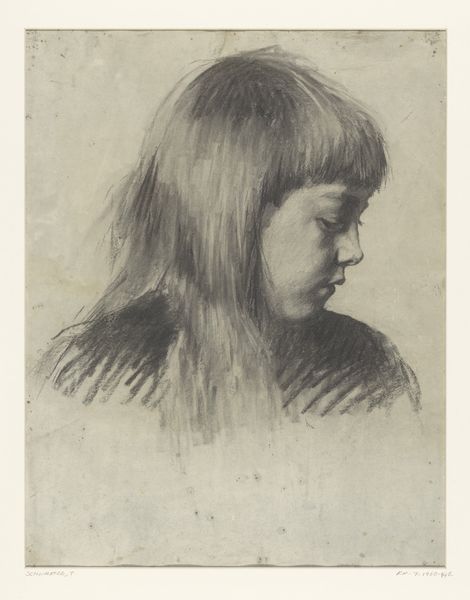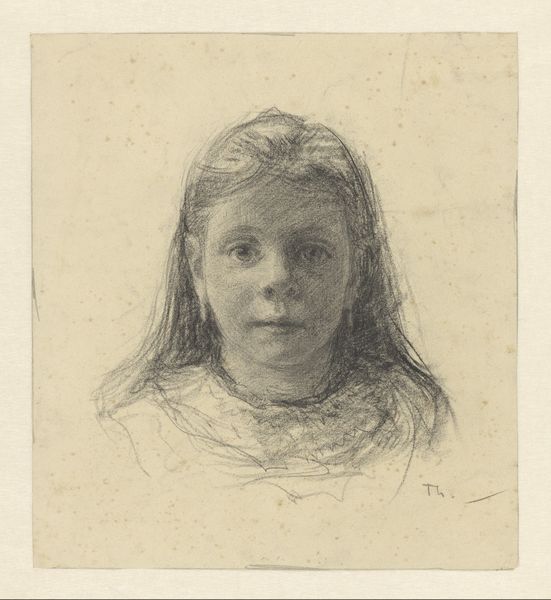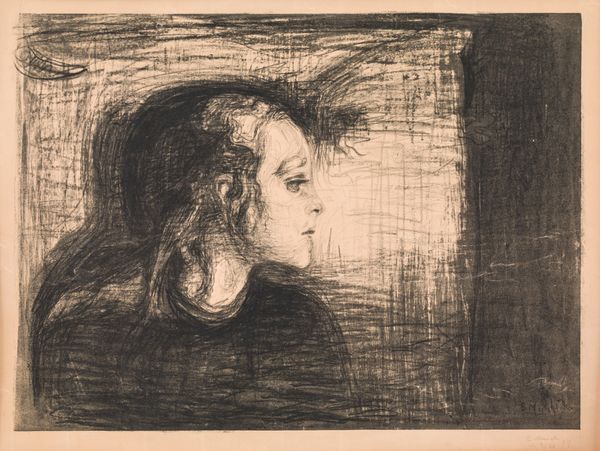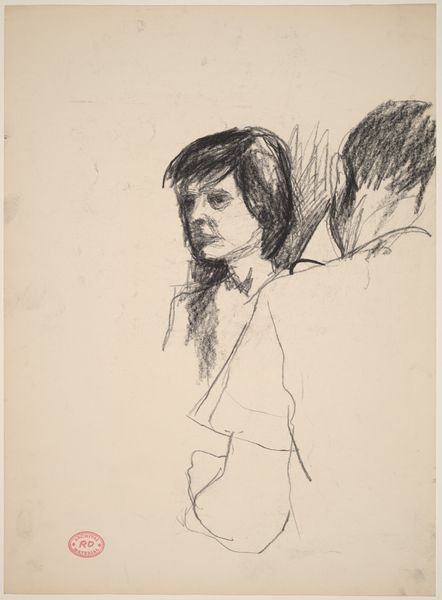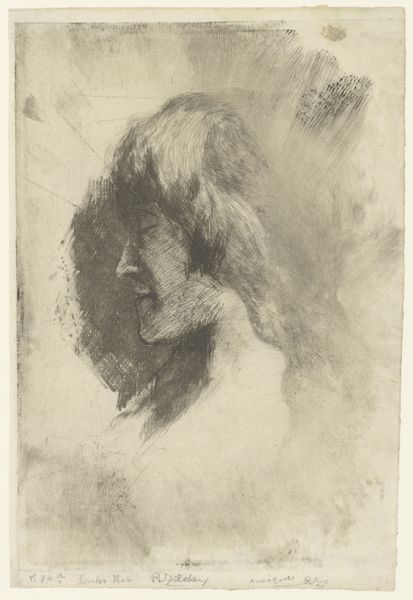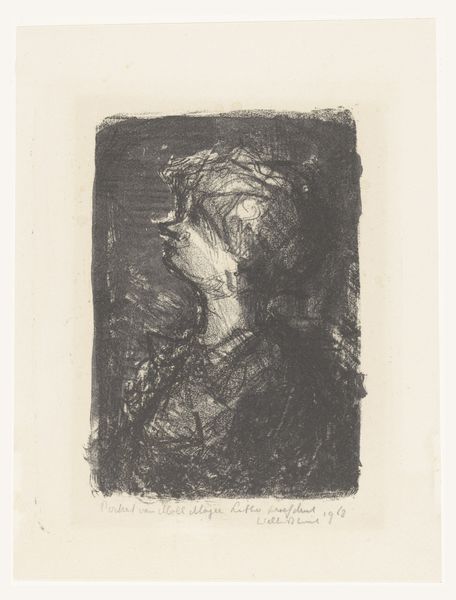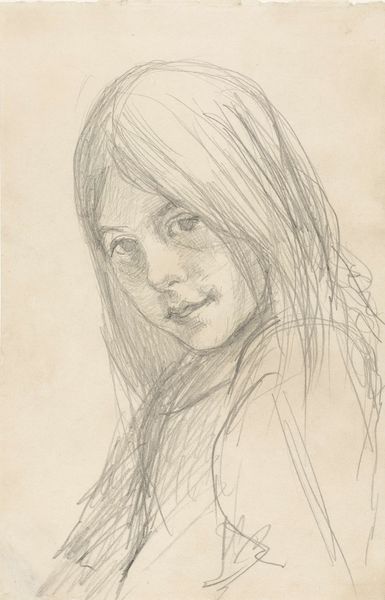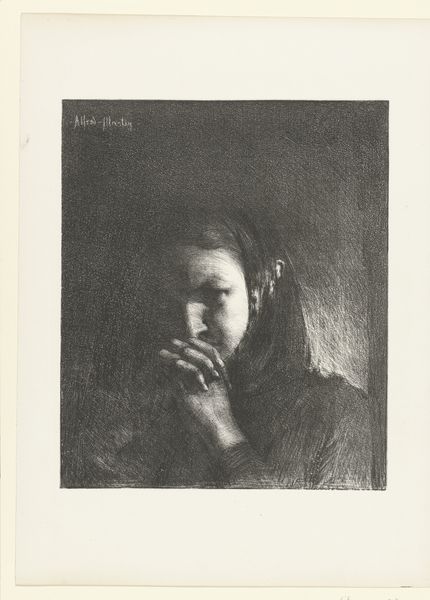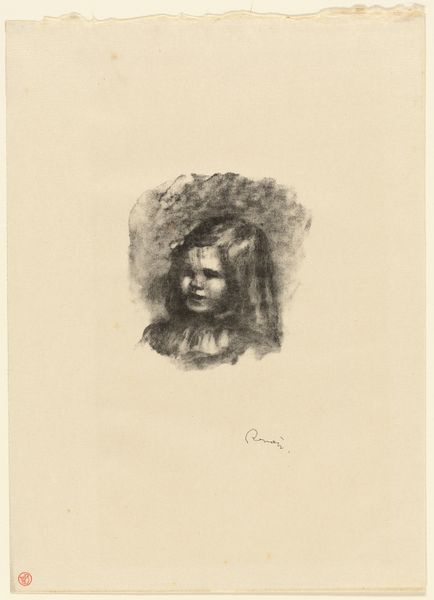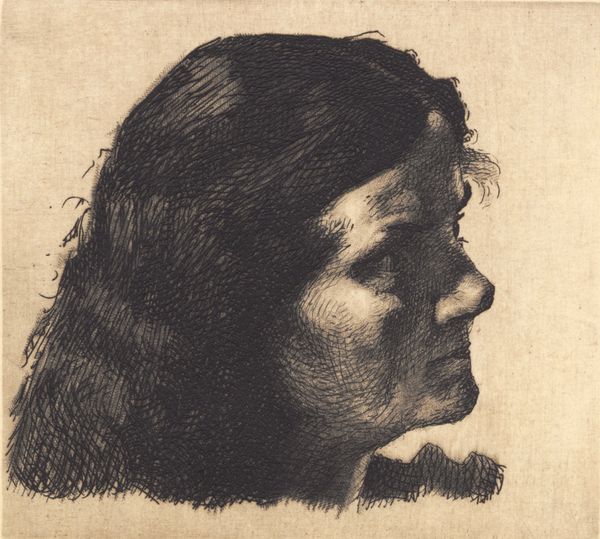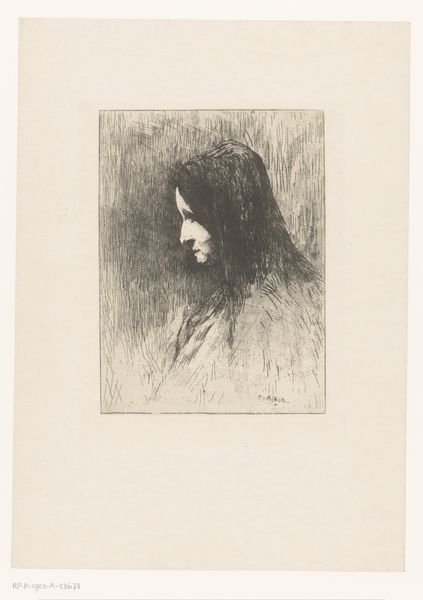
drawing, paper, dry-media, pencil, chalk
drawing
16_19th-century
paper
dry-media
pencil drawing
pencil
chalk
portrait drawing
Copyright: Public Domain
Curator: This delicate drawing, held here at the Städel Museum, is titled "Boy with long hair" by Louis Eysen. Editor: It's hauntingly gentle. The limited palette really emphasizes the vulnerability of the subject, doesn’t it? There’s a softness that’s quite captivating, despite the almost stark rendering. Curator: Indeed. Eysen used a combination of pencil and chalk on paper, giving it that wonderfully textured, almost dreamlike quality. The portrait’s unfinished feel is emphasized by the faint secondary profile sketched in the background. The artist may have been experimenting with composition. Editor: Precisely! That echo of a face amplifies the sense of contemplation, as if we’re witnessing a fleeting thought, a reflection. What symbols or societal contexts resonate with you regarding the long hair? Curator: Long hair on a boy, depending on the era, can symbolize various things. It could reflect aesthetic movements, perhaps a turn away from rigid societal norms or ideas about androgyny within Romantic ideals. Given the use of dry media – pencil and chalk – the work feels especially rooted in artistic tradition. Think academic sketches. Editor: Good point. The monochromatic scale really strips it down to form and line. Notice how the directionality of the chalk strokes follows the planes of the body, creating subtle volume. It isn't about precise representation but the *suggestion* of form. Curator: The gaze is passive and directed to the viewer's right, leaving us guessing about the figure's object of interest. This makes the viewer part of the scene – what do we see in the same direction? What connections might we construct between the subject and us? Editor: I agree. That unresolved gaze, combined with the medium’s inherent delicacy, results in an introspective mood. The incompleteness invites participation, challenging us to project meaning onto that youthful face. Curator: I see Eysen offering us a fleeting glimpse into boyhood. He encapsulates in mere strokes the pensive state of an individual navigating the border of childhood, and societal constraints – all rendered in these shades. Editor: And the lack of adornment in the drawing pushes us to think beyond external appearance. For me, the emphasis becomes about the quality of light, form, and emotion itself. It’s surprisingly affecting in its understatement.
Comments
No comments
Be the first to comment and join the conversation on the ultimate creative platform.
